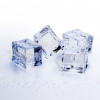More stars in the Universe, or sand on Earth?
Question
It’s often stated that there are more stars in the universe than there are grains of sand on all the beaches on Earth. My question is - who counted them?
Answer
To answer Geoff's stellar question, Izzie asked Michael Merrifield from Nottingham University to dig out an answer...
Michael - There is some disagreement about whether there are more or less stars than grains of sand, so it must be a fairly close thing, or at least hard to estimate. But most of what you read on the internet seems to go for the more ‘poetic’ answer of there being more stars than grains of sand. Sadly, I think the internet is probably wrong.
Izzie - The internet? Wrong? While you were reeling from that one, Michael please show us your working.
Michael - Let’s start with the stars in the visible universe: crudely speaking there are about 100 billion stars in a galaxy like the Milky Way, and about 100 billion galaxies in the universe. So if we multiply these numbers together we get the total number of stars in the universe which comes out as 1 with 22 zeros after it, which is normally written in shorthand as 10 to the 22. In fact, that misses lots of little galaxies and a more complete census comes up with a number about a factor of 10 bigger, so we’ll make it about 1 with 23 zeros after it or 10 to the 23.
Izzie - So to use a technical term that’s a ‘shed load’ of stars. And remember we’re dealing with the observable universe here, so no being clever and bringing up infinity. Now to the sand…
Michael - Sand comes in a range of sizes, but roughly speaking I’d need about 10 thousand grains of sand in a line to get a metre’s worth. Or if I fill up a square a metre on a side I’d need about 10 thousand lines of 10 thousand grains. And similarly to fill up a cube a metre on a side takes 10 thousand, times 10 thousand, times 10 thousand, or one with 12 zeros after it, or 10 to the 12 grains of sand.
So that’s how many grains of sand in a cubic metre. How many cubic metres of sand are there on Earth? Let’s just look at the Sahara which is huge. It covers about 10 million square kilometres. It certainly isn’t all covered in sand, but suppose it has an average sand depth of only 1 centimetre. That would then be about 10 to the 11 cubic metres of sand, and with each cubic metre containing 10 to the 12 grains of sand that gets us to the 10 to the 23 grains of sand already, which you remember is the number of stars in the visible universe.
So that’s with just 1 centimetre depth of sand in the Sahara which certainly isn’t going to be the case, and we’re not counting any of the other deserts in the world, or the beaches, or the sand underground from ancient beaches, or anything else. So I’m pretty sure that there a whole lot more grains of sand on Earth than stars in the visible universe.
Izzie - To return to the original question then; no-one counted them. But by using some nifty calculations you can get a rough idea. Which is lucky because using Michael’s own estimate counting the Sahara sand would take every single person alive today working at it for just over 3 million years. Thanks Michael for doing it by the numbers.










Comments
Add a comment